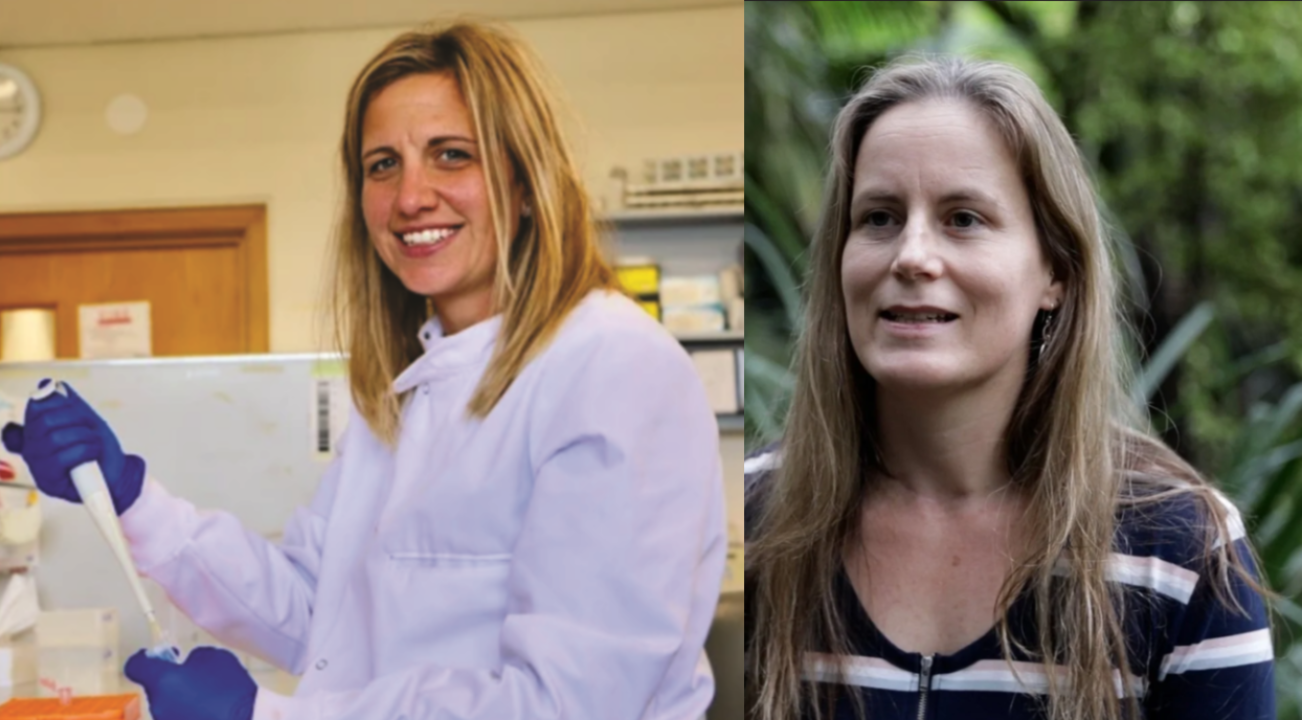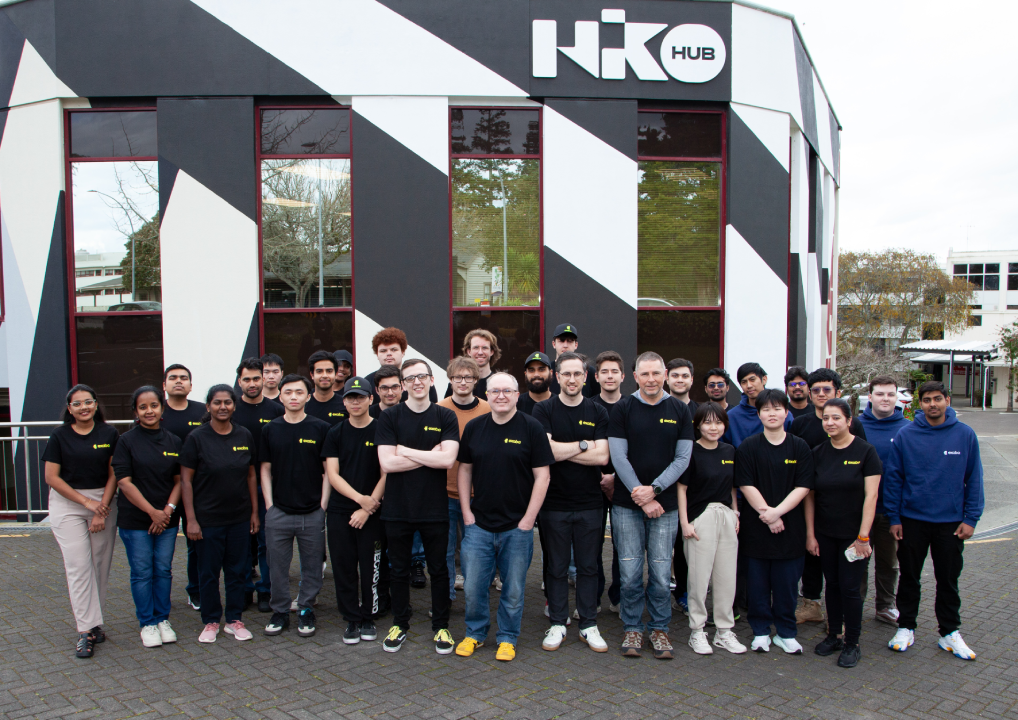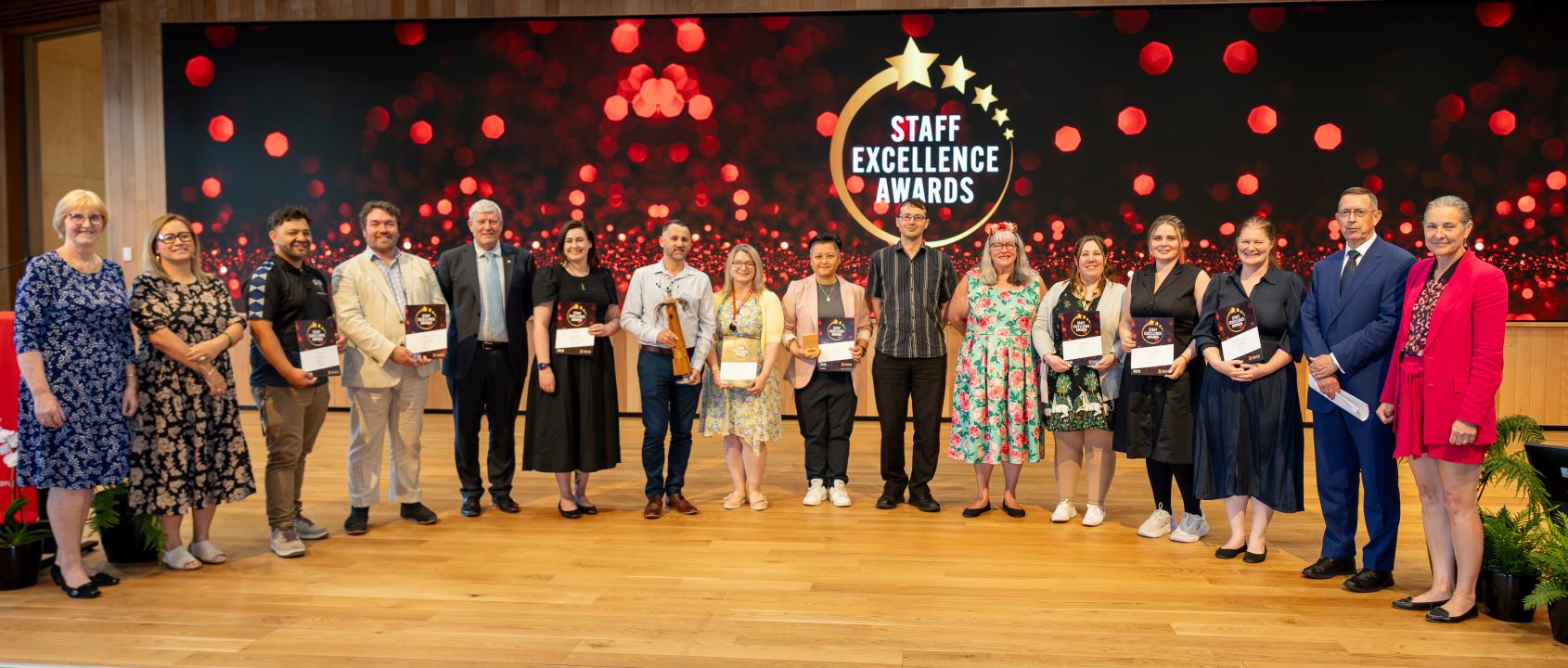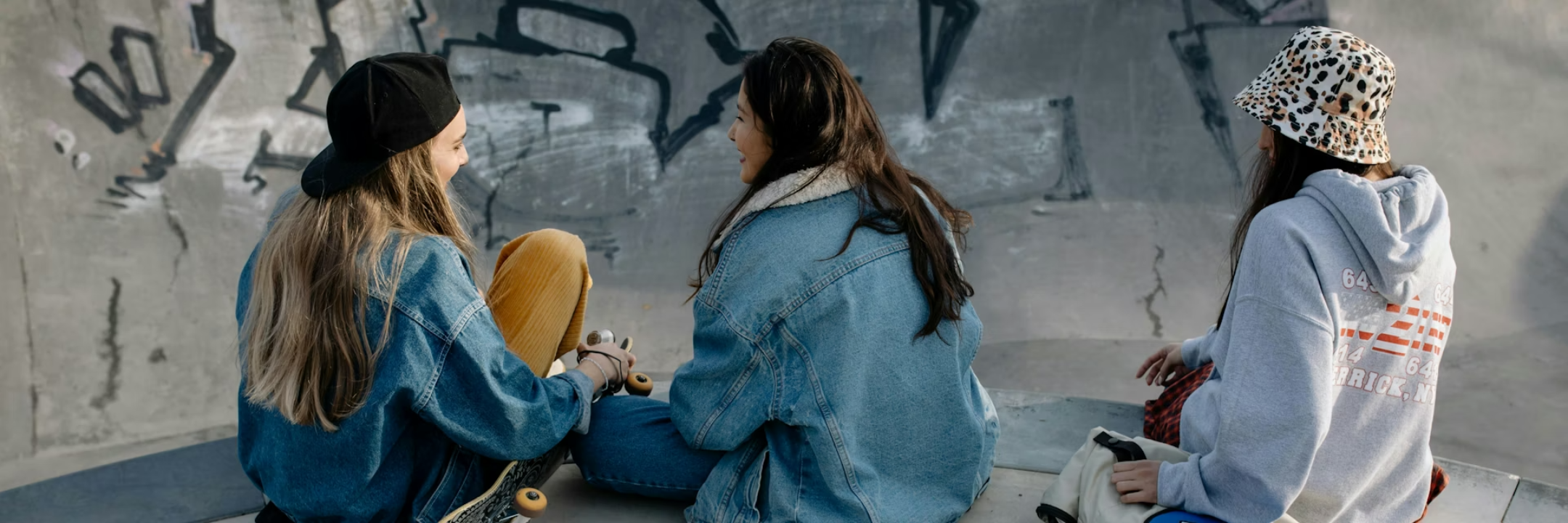A team from the University of Waikato is developing cost-effective technology to help ease labour shortages in the horticulture sector and reduce fruit wastage.
Te Kura Mata-Ao School of Engineering Senior Lecturer Dr Ajit Pal Singh and his team of seven have two entries in the Fieldays Innovation Awards, focused on supporting the kiwifruit industry.
The team has been working on a new gripper, the component at the end of a robotic system that physically picks the fruit, much like a human hand.
“One of the innovations is the actual gripper structure. The other is a soft ‘finger’ that attaches to the structure and gently interacts with the fruit so it doesn’t get damaged.”
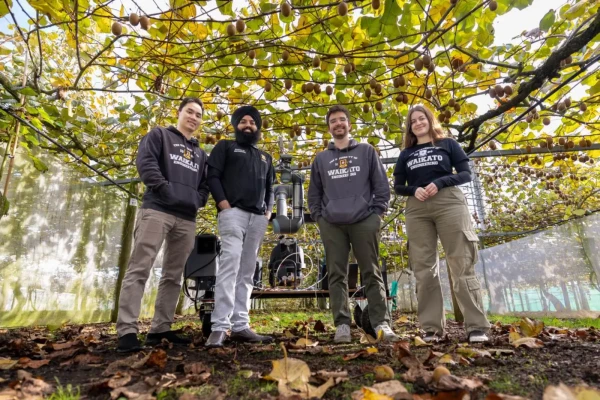
Hung Le Phan (PhD student), Dr Ajit Pal Singh (Research Lead and Senior Lecturer), Christoff Venter (PhD student), and Eva Prinz (PhD student).
The team have received funding for the project from the MBIE Endeavour Fund through a Smart Ideas project.
Dr Singh says there’s no point introducing robotics to an orchard if it’s going to damage the fruit.
"If the fruit is bruised or dropped, the benefit of robotic automation is lost. Our designs aim to reduce damage through their soft, flexible contact surfaces.”
Dr Singh says the key challenge that growers and industry are facing is the labour shortage that's amplified since Covid-19.
"The labour shortages are putting pressure on the growers to recruit skilled workers to help them harvest the fruit, and if there’s not enough skilled workers on the ground, then there's a lot of fruit that goes into the waste because it's unpicked - so they’re losing money.”
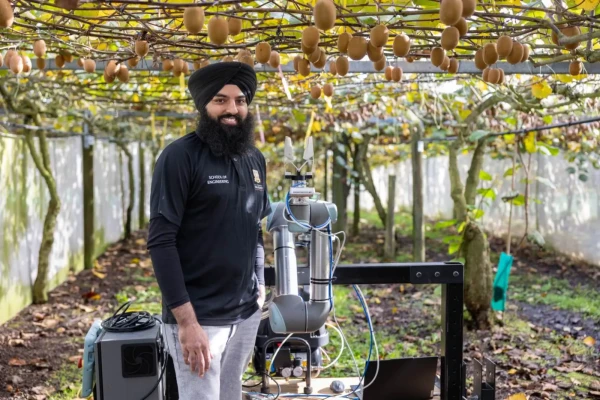
Te Kura Mata-Ao School of Engineering Senior Lecturer Dr Ajit Pal Singh with the gripper they're developing.
The team’s long-term goal is to support growers with reliable robotic tools that reduce dependence on seasonal labour and help ensure more consistent harvesting outcomes.
“We want to create practical solutions so we can solve some of those major problems the horticulture industry is facing. Our goal is simple, cost-effective and reliable innovations that in the future get integrated into automated robotic technology and then become available to growers as a potential alternative.”
Having tested the prototypes in the lab, they’ve recently begun preliminary field trials in an orchard with “quite promising” results showing effective fruit handling and minimal visible damage.
Unlike traditional designs with multiple joints or sensors, the grippers use flexible, single-piece structures that conform gently around the fruit, reducing mechanical complexity.
"These grippers are 3D-printed prototypes, single, jointless structures designed specifically for orchard use, not just lab testing.
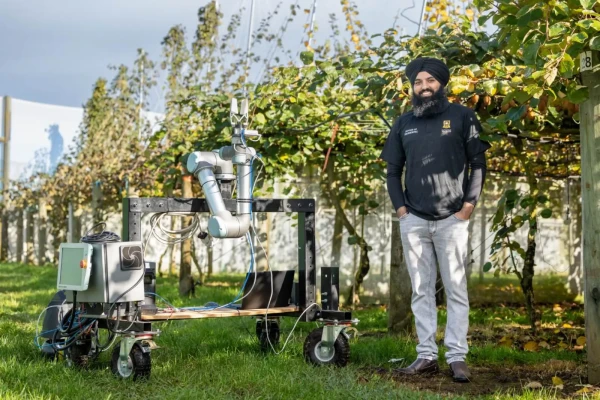
It's hoped the gripper will help with harvesting fruit and prevent waste.
“We wanted something that performs in real conditions: easy to maintain, robust, and ready for the demands of the field.”
He also points out that because the grippers' structures are single-piece designs, they could eventually be manufactured at scale using plastic injection moulding, making them even more cost-effective, durable, and easy to produce in large quantities.
The plan is to test them thoroughly in the orchard this season, and Dr Singh says the team will take them back to the lab to make any improvements.
“From an engineering point of view, our focus is on solving practical, real-world challenges. This project is a strong example of how innovative design can potentially deliver high-impact solutions tailored to industry needs.”
